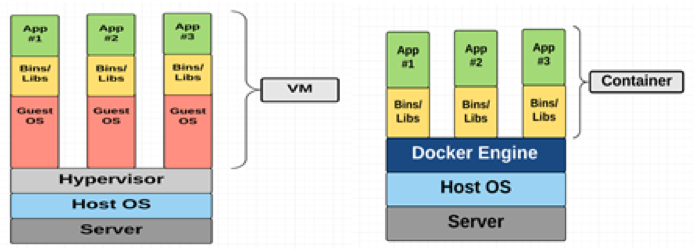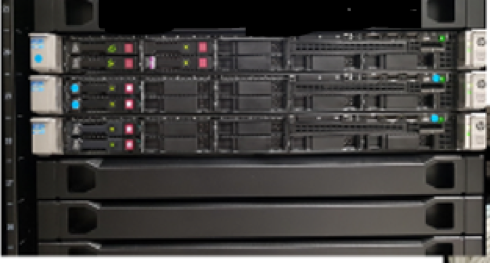2021. What an interesting year. With the world turned upside down by a pandemic that seemingly had its sights set on...
Social Media Round-up
January 2018
NonStop Insider
When looking at what has been viewed on social media channels these past couple of weeks, one item stood out and that was the discussion on virtualization versus containers. The HPE NonStop development team has pulled off an amazing development undertaking and now can provide a virtualized NonStop – yes, NonStop has become just another virtualized workload and is now better positioned to capitalize on more sockets and faster processors.
But what about containers? And shouldn’t NonStop have embraced containerization? Well, not exactly – and for good reasons. But before delving further into this topic, even as NonStop has become another virtualized workload it is good to remember that within NonStop, particularly with respect to Pathway (TS/MP) there is already containerization of a kind.
These discussions and exchanges can be traced back to the post of December 22, 2017, to the NonStop community blog, Real Time View, where this exchange started. C’mon; since when did virtualized become the new “Traditional IT?” post took exception to seeing traditional and virtualized IT lumped together in the same box with just a little hint that perhaps both were legacy when compared to containers. Within the post were two key observations:
- In recent presentations given by major vendors it is hard to ignore charts depicting traditional IT and virtualized IT inside the one box, as these charts then place containerized IT in another box before labelling other boxes with the names of public clouds. Furthermore, it is the assumption here that containerized IT is all that we will find in private clouds and conversely, private clouds will be created whenever containerized IT is deployed. I guess I have to admit I missed the memo about virtualized IT being legacy.

Source: A Beginner-Friendly Introduction to Containers, VMs and Docker
- Point is, containers don’t let you initiate different OSs as part of the container – all containers run atop an OS which, in one sense, makes them a much lighter-weight proposition and, in so doing, have the potential to offer better performance. So yes, there are limitations when it comes to containerization. And yes, when it comes to supporting applications by vendors providing public clouds the preferred way is to support containers as their task becomes simpler, but it’s all a trade-off. HPE has recently added support for HPE NonStop as a virtualized workload. When configured across two or more physical machines, the same level of availability can be achieved as was provided in the past on traditional systems.
This drew a response from Frans Jongma, Master Technologist at Hewlett Packard Enterprise, and what follows here is Jongma’s complete post to the LinkedIn blog, Pulse, and it is being reposted in full as there are a number of NonStop community members who may not be current with all that is being published on LinkedIn that features NonStop:
“In his Real Time View blog, @Richard Buckle asked: “Since when did Virtualization become Traditional IT?” Good question; the industry is moving forward and seems to call everything that is not in vogue either “traditional” or “legacy”. But is it really?
The Client-Server architecture has led to the implementation of separate servers that run only a part of the application. Apparently the popular operating systems (Linux, Windows) were not capable to host multiple applications in a satisfactory way and so users placed every application on a dedicated server. As the compute power of the servers increased, the hardware became greatly under-utilized. To improve cost of IT by decreasing the amount of required hardware, Hypervisors that managed multiple Virtual Machines (VMs) were used and this resulted into a better usage of the hardware compute resources.
While a cost saving in hardware was realized, system management cost did not improve. There were still as many (virtual) servers to manage, the same amount of software updates to apply and so on.
Container technology came around and addressed the “One (virtual) machine per task” approach that came out of the Client-Server architecture. The idea of containers is that they contain everything that is necessary to run an application, but share the common Operating System facilities like binaries, libraries and even parts of the file system. Compared to VMs, containers have a much smaller footprint, less system overhead and require less system management.
An additional feature of the container architecture is that it provides a way to deploy applications on different public cloud architectures without the need to adjust the application.
It is important to understand which technology fits best to your business objectives instead of just following the current trend. An interesting discussion about this scope can be found in A Matter of Scope, by Scott Lowe, engineering architect at VMware. In short: if you need to run multiple copies of a single application you use containers, however, if you need to run multiple applications, the flexibility of VMs is preferred.
Be careful though to narrow the discussion just to containers versus VMs or even to call virtualization as “legacy” and containers as the “way to go”.
Even before Gartner defined the five styles of client-server computing, separation of function existed in the Requester-Server architecture of Tandem Computers’, now Hewlett Packard Enterprise, NonStop systems. These systems were designed to host multiple, but separated, parts of the same application (nowadays these parts themselves might be called applications): the presentation layer, the business layer and the data layer. The operating system was designed to manage these multiple applications; a reason why the need to virtualize the separate layers onto a single server was non-existent. One might consider the Transaction Services (TS/MP) middleware as early “container lifecycle management” functionality for applications such as iTP Webserver, NonStop Application Server for Java (NSASJ), the NonStop implementation of the Apache Tomcat servlet engine (NSJSP), Redis in-Memory Cache and so on. All are applications that share the common functionality of the OS: availability, scalability and data integrity.
Some industry trends however, made virtualization of the NonStop environment appealing.

3U high, fault-tolerant HPE NonStop server
- Hardware technology providing more computing power per socket. Because the systems scale out rather than scale-up, there is little to gain for a NonStop server. However, with virtualization, the footprint of a single system can be greatly reduced. The smallest NonStop system occupies only 3U in a standard server rack!
- Users adopting virtualization to improve hardware utilization are less willing to dedicate specialized hardware to a different operating environment, even if there are additional benefits of this specialized environment.
- NonStop OS support for the x86 processor and the support of RDMA over Converged Ethernet (RoCE) allowing a software-only deployment of NonStop on non-HPE hardware using a hypervisor such as KVM and VMware.
- Distributed processing, in cloud environments a common way to achieve both scale-out and improved availability, require attention and specific configuration. It is an area that still suffers from little industry standardization. The NonStop systems however, were originally designed to operate in clusters and to gracefully take over work should a node fail. In addition, the NonStop SQL distributed relational DBMS allows for scale-out without having to revert to master-slave replication or sharding techniques.
Virtual machines are the best way to build a NonStop system on standard hardware because such a system is in fact a cluster of servers that run Linux next to NonStop OS, but managed as a single entity, and capable of running multiple applications. Fault-tolerance by automatic failover to surviving, always active, nodes and automatic scale-out capabilities are built-in and inherited by applications deployed in this environment.
If your business objectives require these aspects, then you really should include virtualized clusters in your list of options.”
For many NonStop users it may not be a priority to check social media sites like LinkedIn but on occasion there is really good information provided. I am not suggesting everything that appears in group comments or on the blog necessarily warrant our time but that isn’t to say we should simply walk away. The above two examples are a good reflection of the positive aspects of social media so yes, keep checking in on the major groups and yes, by all means, join the conversation!

